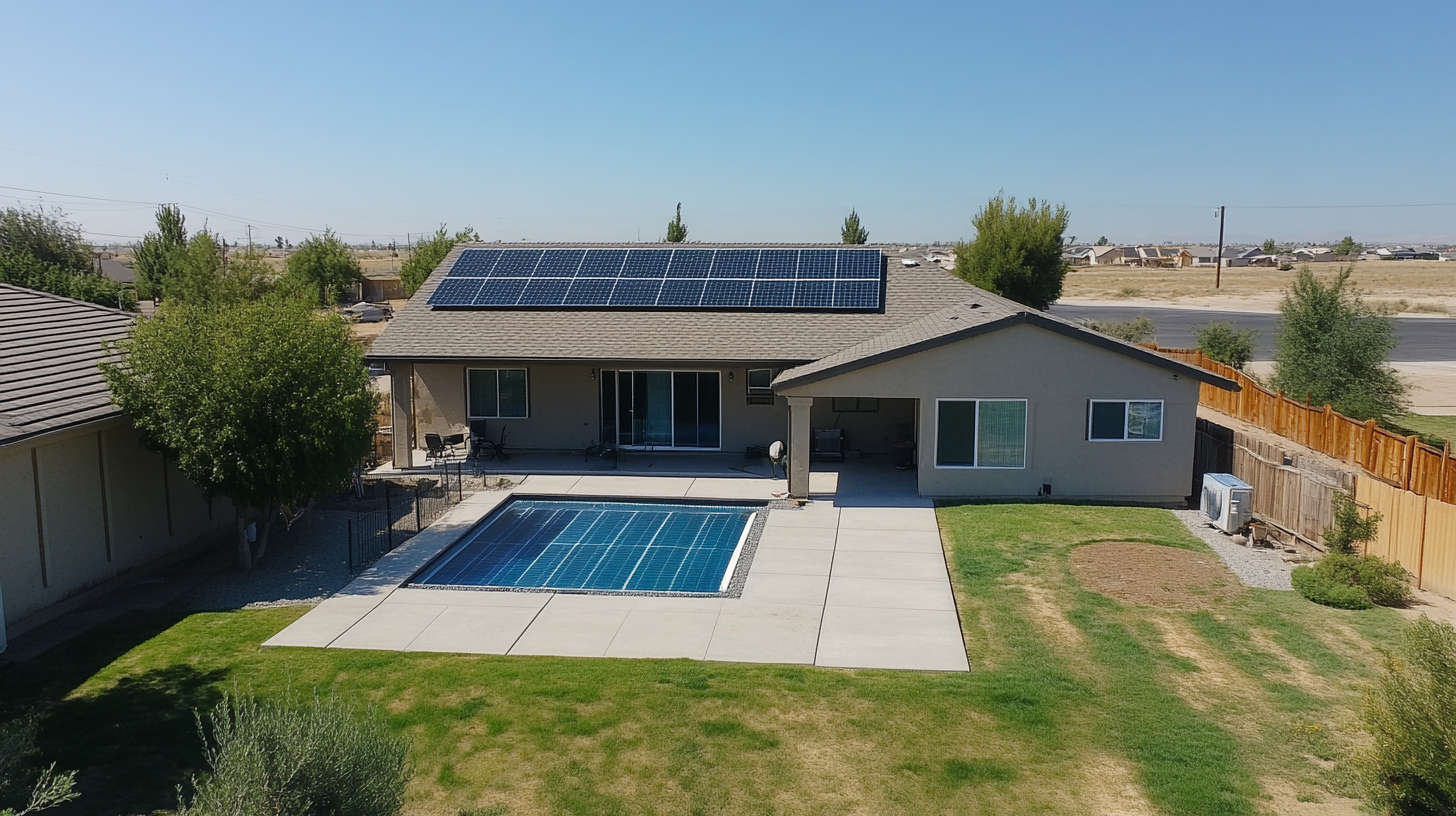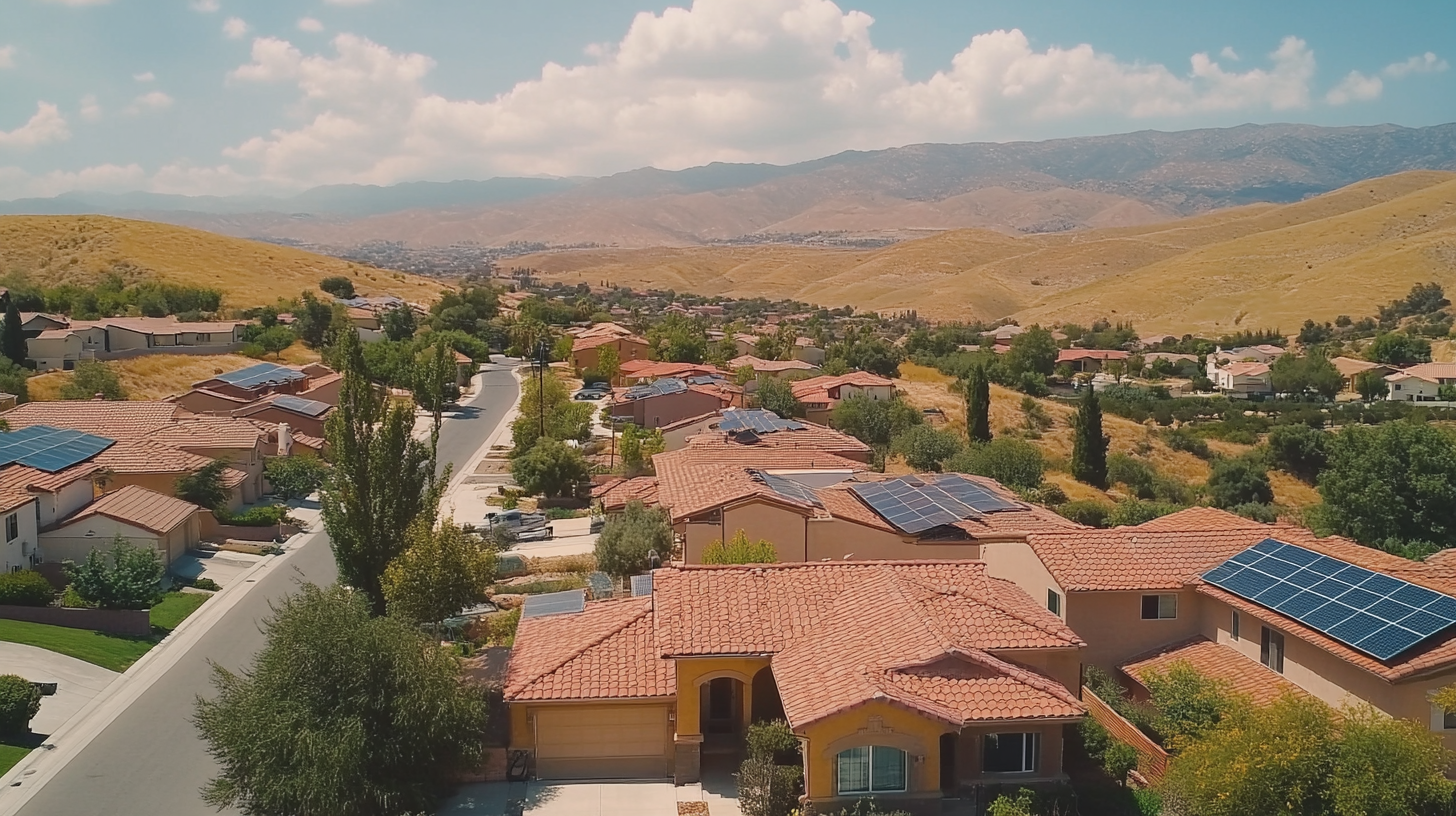Blog
- Home
- Blog
Exploring Success Stories of Residential Solar Systems and Challenges in Sustainable Energy Adoption
Indeed, as the world comes to terms with the urgent need for energy to be made sustainable, Residential Solar Systems have taken center stage among various solutions for reducing one's carbon footprint and improving energy independence. According to the statics given by the International Energy Agency (IEA), solar power will be the largest source of electricity by 2025, wherein residential installations are a major determining factor in this upward trend. In the USA alone, residential solar capacity increased by above 20% in 2020, thanks to advanced technology and increasingly less expensive solar panels. This very shift does not mean euphoria for homeowners alone, but is really helping the country meet the energy numbers toward reduced greenhouse gas emissions.
On the other hand, there are still beyond the good news associated with Residential Solar Systems several challenges that continue to hamper progress into adoption of these sustainable energy practices. Even though, installation rates are increasing, there exist challenges pertaining to regulatory barriers, insufficient financial options, and lack of capacity skilled human resources, thus resulting into various hurdles keeping many people out from its adoption, as reported by the Rocky Mountain Institute. In reviewing both the best practices and the worst experiences regarding sustainability in energy adoption, we find that we will have to apply a wider ranged, multifaceted strategy to really open up the potential of residential solar systems in the struggle for climate change.

Success Stories: Innovative Residential Solar Solutions Transforming Homes
With the increase in demand for sustainable energy solutions, homeowners are starting to adopt innovative residential solar systems. According to the report from the Solar Energy Industries Association (SEIA), installed residential solar capacity in the United States raised from 1.2 GW in 2010 to more than 24 GW by 2022. Such increases can be said to be the instigators of the transformation brought about by solar technology in residential energy consumption because it enables families to reduce their carbon footprint while accruing savings in energy bills. California suburbs boast what would probably be best termed success stories on a collective solar project initiated by households. The result has well been impressive since electricity bills were slashed 60%, quite a cost benefit of this investment. To ease the effectiveness of this adaptation further, the local government brought about incentives; rebates, tax credits the latter are only a few examples through which the accessibility of solar installations has been made possible. The area in 2023 had marked historical achievement by installing eighty percent in the solar rate among qualified homes. There were some difficulties even in the process of diversifying toward sustainable energy use- common barriers to this include high upfront costs, lack of awareness, and regulatory maze. One such research was conducted by the National Renewable Energy Laboratory (NREL) that mentioned advocating community engagement and education as a way of enhancing solar adoption. For example, targeted informational agency programs informing homeowners on the long-term financial as well as environmental benefits of solar energy have shown its effectiveness in overcoming initial reluctance. Such programs, when combined with some success stories and local resources, create an environment in which innovative solar solutions can thrive on the way forward toward a sustainable future.

Overcoming Obstacles: Common Challenges Faced by Homeowners in Solar Adoption
The adoption of residential solar systems presents homeowners with myriad challenges. Although these systems benefit the environment and could save owners money, a number of deterrents could hinder their solar energy ambitions. One major issue would be the regulatory framework and physical barriers that encumber homeowners. Local government restrictions concerning improvements to properties can constrain the feasibility of installing solar panels, for example. Homeowners may well desire to apply their roofs for solar energy but find that local ordinances restrict any changes to their property.
The installation of solar systems requires not only a financial input but also complications with the permit process. Homeowners must likewise grapple with regulations that govern energy infrastructure similar to recent ones put in place in regard to outdoor modifications and establishment of accessible environments. As it stands, the stumbles through these regulations often prolong and delay any attempt for projects in adopting solar energy.
Support measures such as these could prove vital in lessening these hurdles: a subsidy for homeowners seeking to improve their houses' accessibility or sustainability. What Taichung is attempting, in giving financial assistance, for residential environment accessibility features should be placed in a similar application here for promoting solar energy adoption. Creating simple guidelines with subsidy aid will benefit an overwhelming majority of homeowners, giving them the peace of mind to promote energy sustainability.

The Economic Impact: How Residential Solar Systems Affect Home Value and Savings
Emphasizing the added push for adopting sustainable energy, home solar systems come as remarkable props in conserving the environment as well as bringing obvious economic advantages to homeowners. Recent industry reports indicate that between 2024 and 2033, the global solar module recycling market is forecast to grow from $1.13 billion- to a staggering $3.35 billion, making it an impressive annual growth rate estimated at close to 12.5%. This trend speaks to the popularity of solar energy and the trend toward sustainable practices that can revitalize and energize the energy industry.
Perhaps the most remarkable economic advantages are the ones that come with residential solar systems-installed. The investments in solar systems generally translate to a price increase in property values; the buyer, once interested, gets to benefit from the low utility bills and a bit of energy independence. The cost-saving benefits of solar heat technologies in 2024 will have become increasingly significant; they will represent alternatives for cutting energy expenditures without compromising comfort in homes.
Adopting residential solar optimally realizes savings while aligning perfectly with the growing awareness of environmental concerns; therefore, it is a two-pronged approach relevant to both man and the planet. As more home owners join the bandwagon of users in adopting this technology, the aggregated savings and property values will only serve to strengthen the financial case for investing in solar energy.

Community Initiatives: Collaborative Efforts Driving Sustainable Energy Forward
Community initiatives are vital catalysts within the different kinds of collective efforts spearheading all types of stakeholders in terms of sustainable energy adoption. Recently, organizations such as Xylem have partnered with foundations like the China Women's Development Foundation and the Ministry of Ecology and Environment to demonstrate how effective such joint initiatives are in improving sustainability. This collaboration not only creates awareness, but it also brings concrete answers to very practical issues, such as those concerning water safety and resource management. People come up with pioneering projects that could sustain ecological viability but social equity through pooled expertise and resources.
In addition, undertakings such as the Belt and Road Initiative of China epitomize the really important agenda of global convergence of economic and environmental sustainability. António Guterres, Secretary-General of UN, emphasized the importance of those frameworks as ones which would shape the future of greener cities and communities in developing countries. Not only does this dialogue support international dialogue and resource sharing, it also generates an inclusive platform where sustainability practices flourish. Communities must also be invited to these rounds because they help to develop interest-based solutions relevant to their unique contexts and needs.
Future Trends: The Evolving Landscape of Residential Solar Energy Technologies
Evolution in the field of residential solar energy is changing and disrupting the energy environment more quickly, in part due to the advances being made with respect to efficiency, storage, and smart grid integration. The International Energy Agency (IEA) stated that the global capacity of solar photovoltaics (PV) reached 900 gigawatts as of 2020, marking an astonishing growth of greater than 20 percent compared to the previous year. This growth is due to technological advances and increased general public acceptance and government support for renewable energy programs.
One of the major trends affecting the residential solar systems of tomorrow is the formation of energy storage technologies. BloombergNEF states that the cost decrease for lithium-ion batteries has surpassed 85 percent since 2010, making energy storage more accessible to homeowners. Given that solar panels generate energy during the day, the importance of being able to store surplus energy for nighttime use is paramount to efficiency and reliability. In fact, through this smart home technology, homeowners can monitor and manage energy consumption well, thus making energy usage patterns sync with solar production.
The rise of community solar initiatives also allows participation for those who cannot install solar panels on their respective properties. According to a report published by the National Renewable Energy Laboratory (NREL), community solar could cover about 20 million households in the U.S. by the year 2030, greatly extending the reach of solar energy. This collaborative effort helps not only with accessing the energy but also in engaging communities toward sustainability, thus setting the stage for the more resilient energy future. As these trends continue to take center stage, residential solar energy systems will vastly help lower carbon footprints and foster sustainable practices.